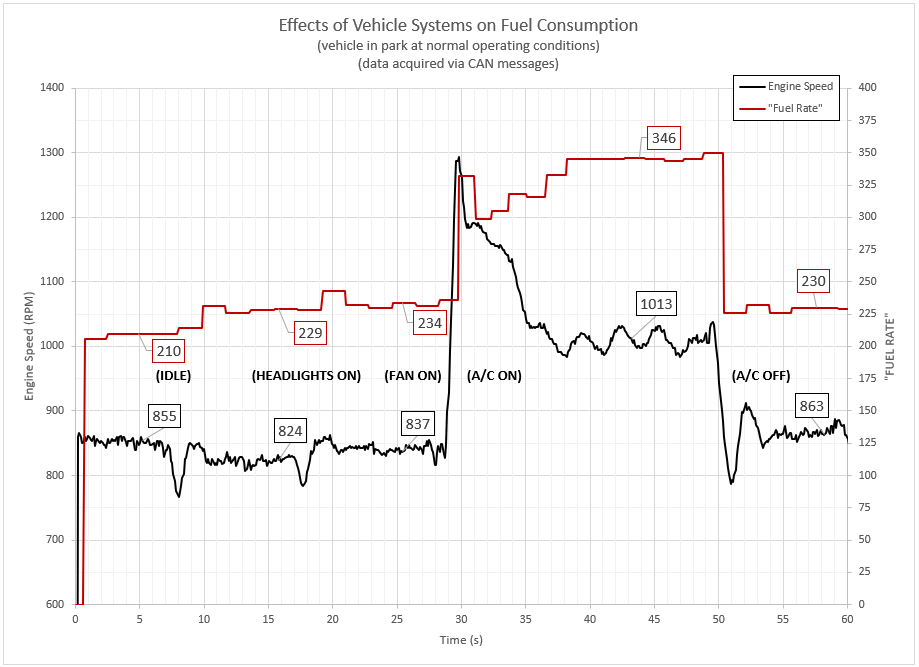This is a pretty obvious one - we all know A/C will harm fuel economy. But - what if there are select circumstances where the A/C is 'free', as it's power input from the engine is much less than the engine's current output state.? Specifically - I am referencing coasting to a stop or to make a turn. This becomes a little more complicated in an automatic transmission, as the engine is not always directly coupled through the transmission to the wheels (ie. torque converter). On a manual transmission vehicle, this would be easy to test. Nevertheless, having only an automatic vehicle, perhaps it will still be possible.
Having already connected to the vehicle's CANbus, it is simple to perform repeatable experiments and look at the [engine's] output response.
Test Procedure Overview:
1. Bring vehicle to normal operating conditions and document:
>> I drove the vehicle home from work (~25minues); outside temperature was 95F;
2. Place the vehicle in Park. At a controlled rate, apply an auxiliary load against the engine with the following components: Headlights, Interior Fan, Air Conditioner (enable button).
3. Measure the engine's speed and reported fuel consumption rate.
Using the same CANbus-based method as the previous log post, I was easily able to apply an auxiliary load on the engine using all (3) auxiliary load methods above. Now is an appropriate time to note that many of the data sets obtained are expressed unitless, as a 'percent of maximum' value in order to display them harmoniously on a single plot. Additionally, I do NOT yet know the unit on fuel consumption - so I will be using it relatively, not absolutely.
Summary:
| Average Engine Speed | "Fuel Rate" | Load(s) Applied |
| 855 | 210 | None (baseline) |
| 824 | 229 | Headlights ON |
| 837 | 234 | Headlights ON + Interior Fan ON |
| 1013 | 346 | Headlights ON + Interior Fan ON + Air Conditioner ON |
Plot:

It is clearly evident that both an electrical and mechanical auxiliary load against the engine increase the fuel consumption rate, as expected. What is unexpected is that the engine appears to slightly 'bog down' from both electrical loads whereas it surges upwards with the A/C engaged.
Notes for a [next?] step: Investigate any published documentation on alternator speed vs. output current (or power).
 Michael
Michael
Discussions
Become a Hackaday.io Member
Create an account to leave a comment. Already have an account? Log In.